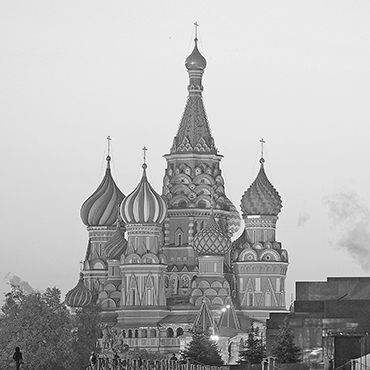[Welcome to the inaugural edition of the Ukraine Reform Monitor. This publication is intended to track the latest news and developments related to Ukraine's attempts to combat corruption and improve governance. It is designed both to highlight positive developments as well as instances and sectors in which corruption remains a significant problem to the functioning of the Ukrainian state.
In this issue, we cover the major reforms that have taken place in Ukraine since 2014. Future editions will highlight more recent developments. To subscribe directly to the Ukraine Reform Monitor, please click here.]
MILITARY IMPROVEMENTS
When Russia first invaded Ukraine in 2014, the country's military was poorly equipped, its soldiers were not being paid, logistics were inefficient, and significant funds were being lost to graft. A comprehensive reform program launched in 2016 by then-President Petro Poroshenko began to fix these deficiencies over the ensuing four years. Part of that reform package included military assistance from the U.S., totaling $2.7 billion between 2014 and 2021. The U.S. participated in training Ukrainian soldiers at the Yavoriv military base and, along with Canada, Lithuania, the UK and Germany, advised Kyiv on how to integrate Ukrainian military structures with those of the NATO alliance. One change resulting from this process was a transition of the country's armed forces to civilian leadership; until that point, the Minister of Defense had been an active military officer. Another notable reform related to battlefield autonomy. In 2014, Ukrainian junior officers needed to seek permission from their superiors for actions on the battlefield, processes that would take up valuable time and were inefficient because of the speeds of modern battle. Now, the mantra of the Ukrainian military has become that "Outcomes are more important than processes" – something that has contributed to "a generation of combat-ready officers."
More recently, the government of current President Volodymyr Zelenskyy has begun to tackle corruption in the military, and to increase the transparency of military purchases in a bid to dispel allegations of the misappropriation of funds. As part of that drive, Zelenskyy earlier this year issued a decree dismissing Ruslan Druzba – the deputy commander of the country's National Guard – and launched consultations with defense sector officials. According to Ukraine's Defense Minister, Oleksey Reznikov, hundreds of officials with the ministry and armed forces faced discipline last year, and there is now "zero tolerance" for corruption in the ranks. (The Conversation, March 8, 2022; Reuters, February 12, 2023)
CLEANING UP GOVERNMENT PROCUREMENT
At the time of the 2014 Maidan Revolution, the Ukrainian state was known to be one of the most corrupt in Europe, and there was very little transparency in government contracts. Thereafter, however, a group of civil society volunteers put together a platform that put procurements online for all to see. Given the name ProZorro, which is Ukrainian for "transparency," the platform allowed all government contracts to be bid on online. After its launch in August 2016, ProZorro became well-known for its transparent nature and garnered many global awards. According to Ukrainian estimates, ProZorro saved the country some $7 billion over the course of its first five years in operation. In recent years, however, there have been concerns regarding the system being circumvented. For instance, Kyiv procured medical supplies outside ProZorro to hasten the country's response to the COVID-19 pandemic. Additionally, big projects, like a beltway around Kyiv, have been exempted from the system by the country's parliament. (Wall Street Journal, May 19, 2016; Kyiv Post, July 22, 2021)
REFORMING THE NATIONAL POLICE FORCE
During the 2014 protests, members of a special division of the police force, called the Berkut Division, shot and killed roughly 100 protestors. This brutality, and a culture of bribery and other forms of abuse and harassment within the country's law enforcement bodies, led to popular outrage and resulted in a wide-ranging overhaul. This included the disbandment of the Berkut Division, the switching of the police force's name from "militsiya" to "politsiya," and the creation of the Patrol Police, which would henceforth handle most day-to-day interactions with ordinary citizens. U.S. practices for law enforcement were used as a model of emulation, with Ukraine's new generation of officers receiving uniforms similar to ones found in the U.S. and American trainers being deployed to work with new recruits. Notably, the Patrol Police was not simply a rebranding of an old force, because the Berkut had been widely distrusted in society and complicit in extortion and graft. Rather, the Patrol Police constitutes a qualitatively new body, and nearly all its hires are educated young people.
Since Russia's invasion in February 2022, law enforcement in Ukraine has been praised for its performance. As of this past February, robbery and assault in the country are down some 50-60% compared to a year prior. Deputy Chief of the Patrol Police Oleksiy Biloshytskiy has acknowledged that the statistic might be skewed because of the war, but noted that it reflects "the unity of the society right now." (Foreign Policy, September 8, 2015; New York Times, February 9, 2023)
CREATING ANTI-CORRUPTION AGENCIES
In 2015, Ukraine established an anti-corruption law enforcement agency called NABU, the National Anti-Corruption Bureau of Ukraine. The agency is a civilian-controlled organization whose sole mandate is to investigate corruption. By 2019, NABU had charged more than 300 people with corruption and brought 200 cases to court. Among those detained were judges, members of parliament, the head of the State Fiscal Service of Ukraine, a Minister, and heads of state-owned enterprises. Subsequently, a new law adopted in October of 2021 aligned NABU's organizational principles with the Ukrainian Constitution and gave the bureau more autonomy. Under the new law, the government is prohibited from withholding the organization's funding – something that had previously allowed it to exert political influence over the NABU's functioning.
This Spring, in an effort to allay Western concerns over how aid is being spent, the Zelenskyy government appointed a new NABU director, Semen Kryvonos. Kryvonos' appointment, however, has not been without criticism, with a number of anti-corruption watchdogs raising worries over his lack of experience. Nevertheless, NABU's activities have continued apace. In May, the bureau's Specialized Anti-Corruption Prosecutor's Office gathered enough evidence and arrest the head of the country's Supreme Court, Vsevolod Knyazev, for receiving a $2.7 million bribe. (The New Voice of Ukraine, May 15, 2023; Current Time, May 16, 2023; Atlantic Council, October 21, 2021; Wall Street Journal, March 6, 2023)
UKRAINE AS E-GOVERNMENT MODEL
As part of its anti-corruption efforts, Kyiv has gravitated toward electronic governance. In September 2019, it launched Diia – an app that allows Ukrainian citizens to carry out many of their interactions with the government online, thereby improving efficiency and eliminating irregularities (such as demands for bribes) that had been routine before. Before Russia's 2022 invasion, Ukrainians were able to register births and marriages via the app, and renew their passports the same way. Since the start of the war, Diia's functions have expanded, and the app can now be used by victims of Russian bombings to apply for emergency funds, to expedite evacuation proceedings, and to report sightings of Russian military personnel. 70% of all smartphones in the country have the app installed, and Diia has been praised worldwide for its effectiveness and design. According to USAID Administrator Samantha Power, countries such as Colombia, Kosovo, and Zambia are using Diia as an example to construct their own versions. (The Guardian, May 26, 2023)


